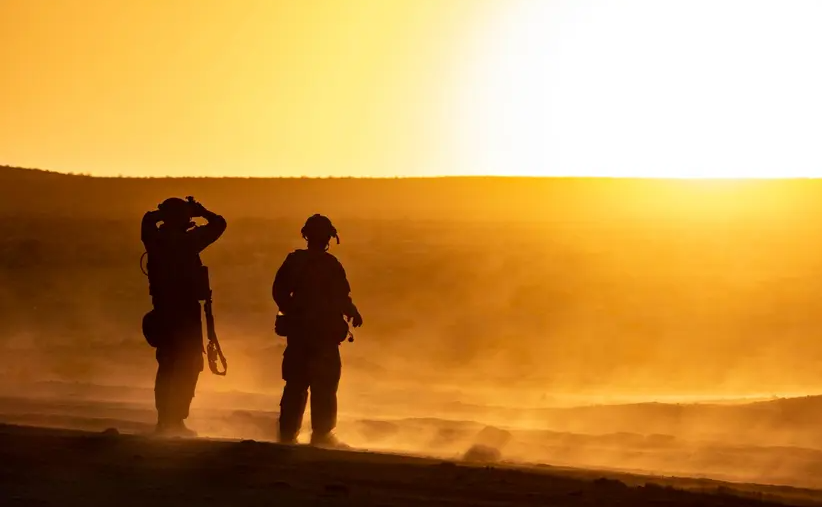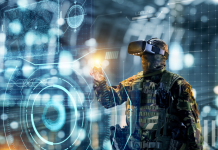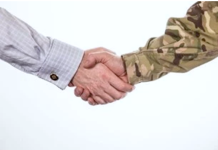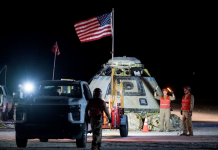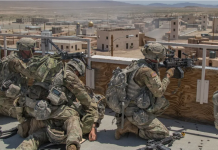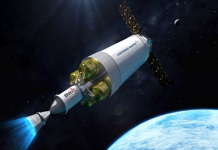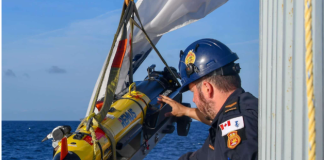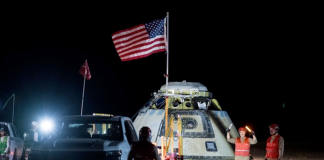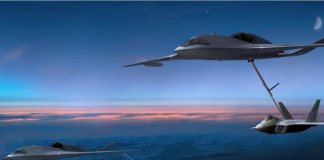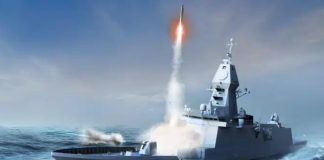By RAND.ORG
BRyan Rooney needed some way to convey the enormous risks and uncertainties of climate change. His audience was military: planners and leaders trying to anticipate how dangerous the world would be 20 years from now. His choice was clear. He went with a card game.
Rooney is part of a legacy at RAND that reaches back almost to its founding. He designs and directs wargames. Military leaders have used games like his to think through everything from nuclear escalation to pandemic disease to the dangers of artificial intelligence. Players in these games might face any number of calamities with every turn—but, until recently, climate change was not one of them.
That has changed. The Pentagon has freed up millions of dollars to better incorporate climate change into its wargames. Researchers at RAND now routinely work climate disasters into their game scenarios, from rising sea levels that put bases underwater to blistering heat waves that make it dangerous to operate outside. The card game that Rooney developed shows just how serious games can be for communicating the science of climate change.
“People sometimes think climate change is going to progress in a natural order,” Rooney said. “That’s not right. It’s going to be different levels of bad, in different places, at different times. That is going to have real social, political, and military impacts. If you don’t have climate-informed games, then you’re not understanding the physical environment. And you’re going to miss a lot of what’s coming.”
The U.S. Department of Defense describes climate change as a “critical national security issue,” a “threat multiplier.” It has established a sub–working group to model and wargame what the climate future might look like. But these are still the early days of that effort. The department hosted its first major climate game—set in a future East Africa battered by drought, floods, and cyclones—just over three years ago.
If you don’t have climate-informed games, then you’re not really understanding the physical environment. And you’re going to miss a lot of what’s coming.
Abbie Tingstad is one of the RAND researchers who has worked with the department since then to wargame climate change. She’s an expert on the Arctic, a region where China, Russia, and the United States are all watching the ice melt and new sea lanes open. She used to have to corner senior officers at the Pentagon if she wanted to talk to them about climate change. Now they ask her for briefings.
“There’s always some tension between wanting to be true to the science and very specific about the uncertainties, but then also wanting to communicate what the evidence is telling us about how this could play out,” she said. “Games do that. They give us a way to not just communicate what we’re seeing, but then to ask the next questions: How does this change your plans? How does this change your missions?”
RAND’s card game began with a request from the Pentagon. It wanted to think through how climate change might impact people, infrastructure, and military operations in South Asia around the year 2040. Researchers had a few options. They could have tried to develop a tabletop strategy game, with players pushing markers around a map. They could have made it a game of resources instead, in which players would choose how to use their money and manpower to address the effects of climate change. But they realized those game formats were all missing a step.
What they needed, first, was a way to put people in South Asia in 2040 and help them understand what climate change might look like. And for that, they needed a card game.
Rooney and other wargamers at RAND started working with Tingstad and other climate scientists. They dug through studies, reviewed climate models and risk assessments, and pulled in the latest projections from the World Bank and Intergovernmental Panel on Climate Change. Then they summarized everything they had learned in a deck of 31 cards.
Each card depicts a climate hazard that could strike South Asia in the 2040s. Most represent what will by then be a new normal: “Terrifying deluges,” “Our wells run dry.” Others raise the stakes: “Crops wither, prices soar.” A few represent extreme events: “No water, no lights, no hope.” And the unluckiest players might draw a catastrophe card: “Mumbai, a city lost at sea.”
Players draw one card for each turn, and each turn represents one year. Then they have to describe what the situation on the ground might look like under those conditions. They also have to consider the consequences. Food insecurity that could affect millions. Damage to infrastructure. Political unrest in India or Pakistan, two nuclear-armed powers that could bear the brunt of climate impacts. Each new card—each new year—delivers new hazards on top of the old. That, too, follows the science. A terrifying deluge one year will be no guarantee that crops won’t wither the next.
Gaming Out Climate Change
The card game that RAND developed for the U.S. military has 31 event cards, each describing a climate hazard that could strike South Asia in the 2040s. Players draw one card to represent one year and then talk through the consequences.
Researchers have played the game several times with military officials. Players often question whether the scenarios they draw from the deck are really all that plausible. One card, for example, shows the breakdown of the annual monsoon that delivers most of India’s rainfall. Players have pushed back on that one, sure that it must be a low-probability risk. But the researchers tell them: Not only is that well within the climate projections for 2040, it’s not even one of the extreme-event cards in the deck.
“These are all within the realm of possibility,” said Flannery Dolan, an associate engineer at RAND who specializes in long-range climate planning. Climate change, she added, “isn’t going to follow a single trajectory like players might expect. It can be really hard to conceptualize all the data, all the different ways this could play out. Games like this help people understand the bounds of what’s possible.”
The military should continue to expand its use of gaming to think through—and plan for—climate change, researchers wrote. Games can educate people about what the future might look like. They can stress-test plans to see how they hold up as the climate changes. They can force people to think through the national and international consequences of climate emergencies. A good game can expose readiness gaps, identify bureaucratic hurdles, or walk through how competition with China or Russia might unfold in a rapidly changing world.
Researchers at RAND just finished another game testing how climate change could challenge military operations in the Indo-Pacific region. Tingstad ran a game last spring that explored how Chinese operations in the Arctic might unfold as the ice melts. Researchers are now in talks to develop a game set in Africa, in a future when food and water security are breaking down.
Games “get people who need to have a conversation to have that conversation,” Rooney said. “They get people thinking about, what does this mean for operations. What does this mean for the people who live in these locations that might be really damaged by climate change? You can get to some bad places by the end—but it’s better to know that now than in the 2040s, when all of a sudden it’s right outside your door.”

